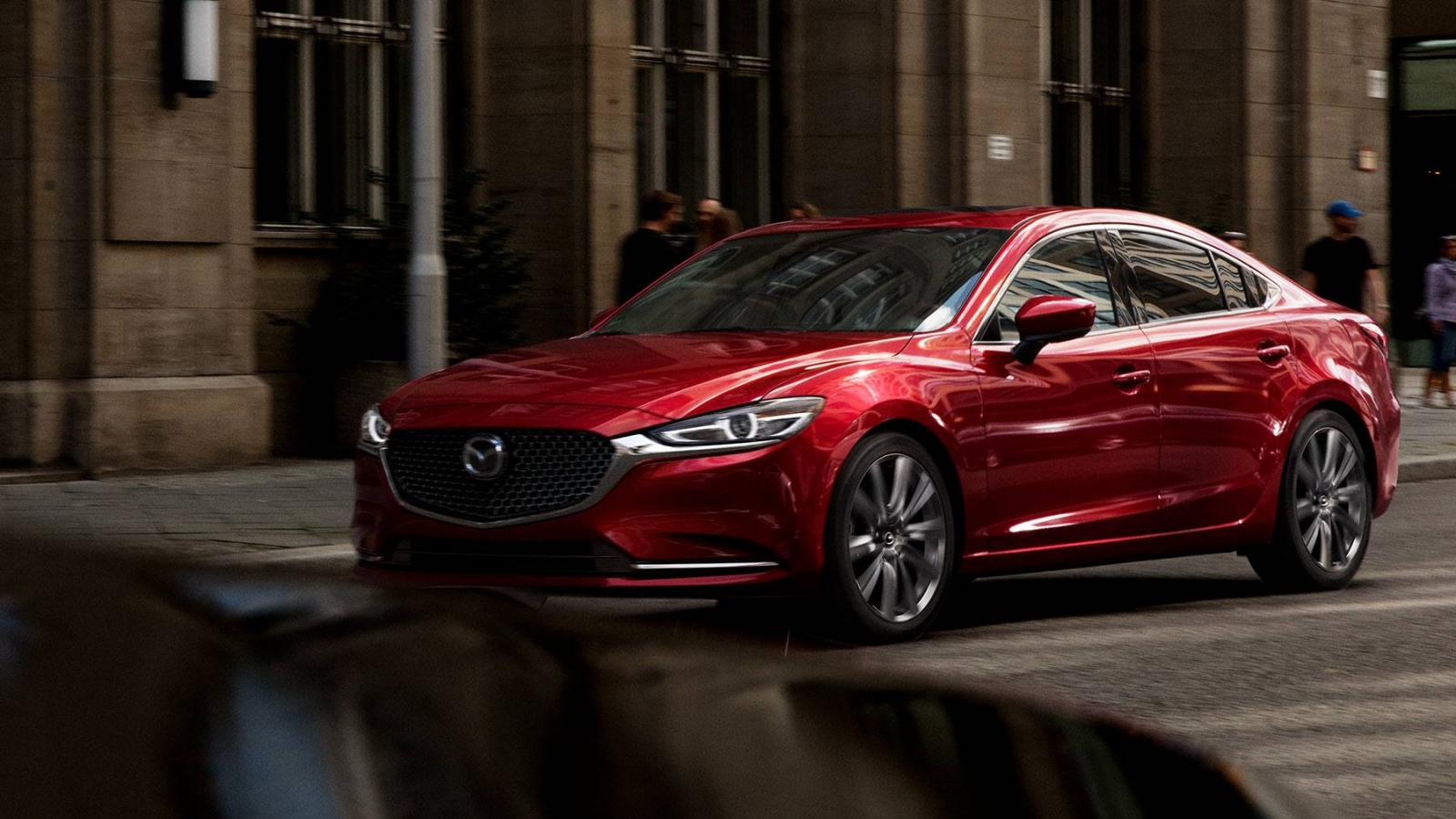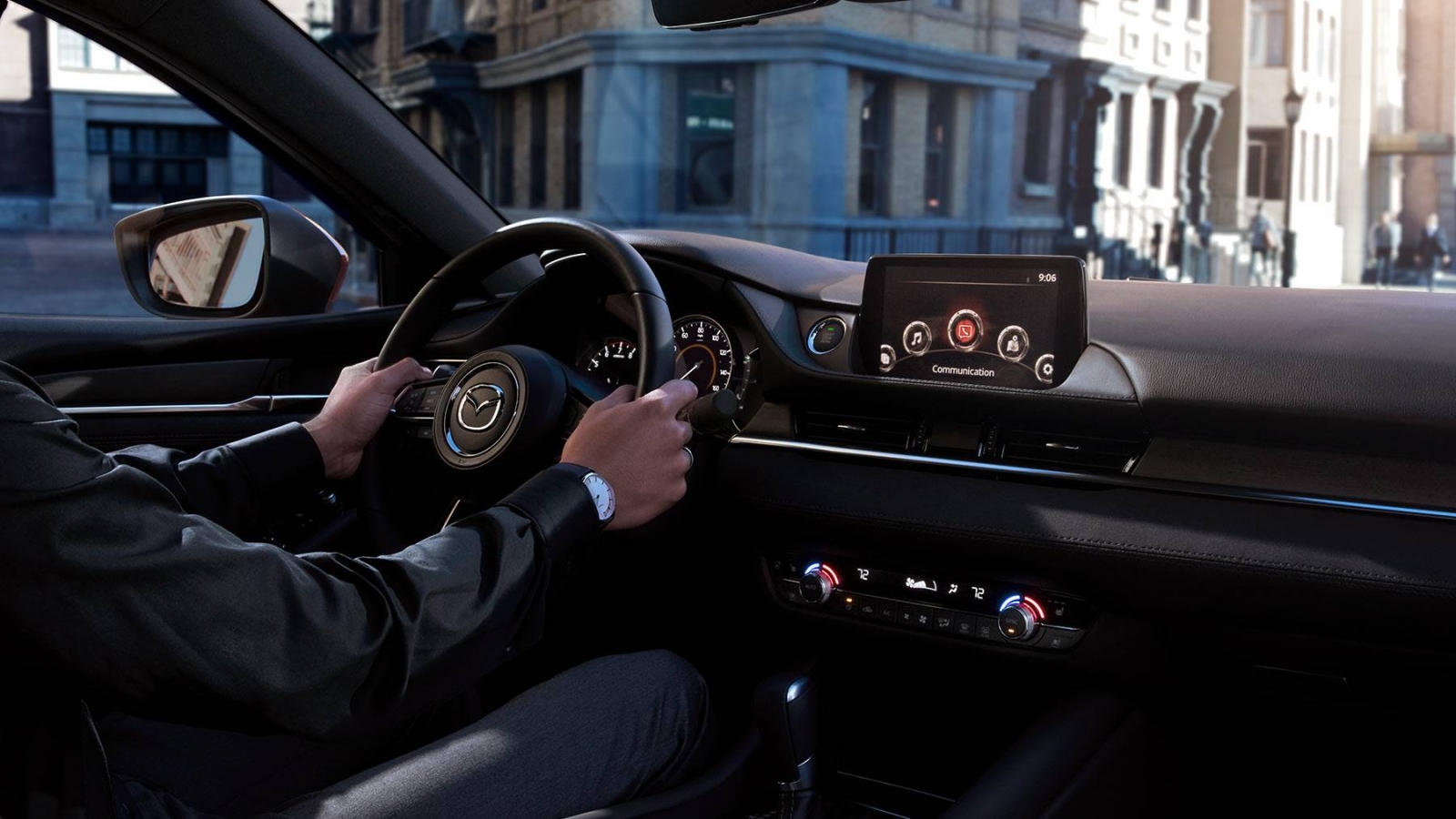Executive Wheels: Make Mine the Mazda – By a Little
Car review of the 2018 Mazda6 Signature and 2018 Honda Accord Touring
Jeff Rundles //November 19, 2018//


Executive Wheels: Make Mine the Mazda – By a Little
Car review of the 2018 Mazda6 Signature and 2018 Honda Accord Touring
Jeff Rundles //November 19, 2018//

It seems as though the car companies are sending out a bunch of traditional sedans to the press pool these days because, well, sedan sales are waning. Indeed, both Ford and Chrysler/Dodge have announced they are dropping most sedans from their lines in the near future. The sales concentration, of course, has been on the hot SUV and pickup truck markets, for two reasons:
1. The public has voted with its pocketbooks that they want SUVs and trucks
2. The profit margins on these larger vehicles are greater for the car companies, so most of the efforts in design and marketing have gone to the SUV/truck end of the scale.
What this means for consumers – not that they want them – is that some of the best deals out there in automobiles are in the sedan market, and over the past couple of weeks I have had the opportunity to drive two of the leaders in this segment, the Mazda6 and the Honda Accord. While the companies have sent out 2018 models this fall for auto-reviewer test driving, my research indicates the 2019 models of these two venerable sedans will be unchanged.
I wasn’t really thinking about this in advance of the test drives, but it turned out these two cars from Japanese rivals are amazingly similar. They are the same size – mid-size sedans – they are both the flagship sedans in each of the manufacturers’ lines, they cost virtually the same (both test-drive models supplied were top-of-the-line trims and their bottom lines were only $200 apart), they looked nearly identical from the outside, they felt nearly identical in the driver’s seat, they drove pretty much the same and they were virtually identical in equipment. If you removed the badging, I believe most consumers would be hard pressed to tell the difference from just looking at them or sitting in them.
As I have said often of late, there are no bad vehicles in showrooms these days, so the differences, and ultimately the buyer‘s preference, boils down to the little things – and there couldn’t possibly be a better example of that than looking at the Mazda6 versus the Honda Accord. There were times during the two weeks of testing – one week for each – I felt was on a two-week test drive of one vehicle, but ultimately – because of the little things – one came out as my favorite.

It seems pointless these days to go through all of the high-tech gizmos they put in cars. Suffice it to say both the Mazda6 Signature and the Honda Accord Touring – both top-of-the-line trims, as I said – had all the nice stuff. Bluetooth, hands-free/voice commands, lane departure warning, cross traffic alerts, blind spot monitoring, cameras around, excellent sound systems, hookups for all the modern smart-phone apps, heated seats and steering wheels, keyless entry – everything. They both also had traditionally sized sunroofs and excellent leather seating surfaces – and everything is standard at this end of the trim offerings.
So, as I said, it boils down to the little things.
The first big difference I noticed – and I noticed on the first drive of each vehicle – is the ride. While both feature 19-inch alloy wheels, the Mazda6 had regular tires but the Honda Accord had low-profile tires. The result was the Honda was clunky; it banged roughly even when hitting a small depression like a manhole cover, but it really clunked loudly and uncomfortably when I rode over a pothole or some of the major dips. The Mazda6, on the other hand, was a smooth ride, and took the bumps with little noise.
The ride of the Honda, throughout my week, bugged me no end. You’d think they’d make up for it with shocks and struts, but they didn’t; it just was a rough ride.
Another thing I noticed was the engine.
The Mazda6 features a 227 horsepower, 2.5-liter, 4-cylinder engine, turbocharged and it was very quick and responsive with little to no turbo lag (rated 23 mpg city/31 mpg highway/26 combined). Coupled with a 6-speed automatic transmission, this engine will kick it with the best of them. The Honda Accord carries a 252 hp, 2.0-liter 4-banger engine, also turbocharged, coupled with a 10-speed automatic transmission (rated 22 mpg city/32 mpg city/26 combined). This system is also quick and responsive and operates relatively smoothly, but it surged a bit when accelerating and seemed to be trying harder to make up for the 20 percent difference in engine capacity. While the Honda was rated with higher horsepower, it was actually the Mazda6 that felt like the more powerful powerplant.

Another big difference was the gear shifting, and here I have a strong bias. While both cars had the ubiquitous paddle shifters behind the steering wheel for those who like to quasi-manually run through the gears, the Mazda6 featured a regular gear shifter mounted on the console, and the Honda, like most all Hondas, had push-button gear shifting. I detest the latter. I like the feel of a gear shifter, even if it only runs from P to R to D; it makes sense to me and I don’t have to constantly look to see where I am in gear. The push-button gear shifter is clunky, especially in this Honda. In my friend’s Lincoln with a push-button gear shifter, you just push the appropriate button and go. In the Accord you have to pull back on the reverse button to engage, so you have to look down to make sure you’ve got the right button. It’s all just so cumbersome. Besides, one of the reasons for a push-button gear shifting mechanism, I presume is they are mounted on the dash in an otherwise empty dash space, saving space on the console for extra cup holders or heated seat buttons. Honda, though, has mounted the push-button gear shifter on the console, so it takes up as much space as a standard gear shifter anyway. I don’t see the point; the whole push-button gear shift thing strikes me as an affectation, just a way to be different in an age of sameness. Different isn’t necessarily better, especially here on the Accord.
A few other differences. First, the Mazda6 had a bigger, as in deeper, trunk. I used both cars for a golf outing and it was slightly easier to maneuver the clubs in the Mazda than in the Honda. But just a little. Second, while both cars had excellent sound systems, the Honda featured traditional knobs, mounted on the front of the radio, for tuning and volume, but Mazda, for some silly reason, likes to put is volume knob on the console next to the gear shifter. This is another example of being different for different’s sake, and here definitely not better. An affectation. Also, the Mazda had traditional headlamps – very good at lighting the way, but nothing special – while the Honda featured these very cool multi-bulb LED headlamps. I don’t think I want to know what the replacement costs would be, but the Accord’s headlights are very cool looking, and they light the way very well. The Honda web site calls them “low-beam” headlights, and I took that to mean that they are very bright but don’t interfere with the vision of driver’s in oncoming traffic. I liked ‘em anyway.

On the price side, the base price of the Honda Accord 2.0-T Touring is $35,800 and the only added cost was $890 in destination and handling fees, for a bottom line of $36,690. The Mazda6 Signature carried a base price of $34,750, and then they charged $75 for floor mats, $895 for the “Soul Red Crystal Metallic” paint job (very nice), and $125 for scuff plates. Then $890 for Delivery, Processing and Handling fees, for a bottom line of $36,435.
As I said, both are very nice sedans, very competitively priced in the marketplace, and are nearly identical. It’s the little things that, I believe, give a slight edge to the Mazda6.
RATINGS:
HONDA ACCORD – THREE AND THREE QUARTERS WHEELS (OUT OF FOUR)
MAZDA6 – FOUR WHEELS
























